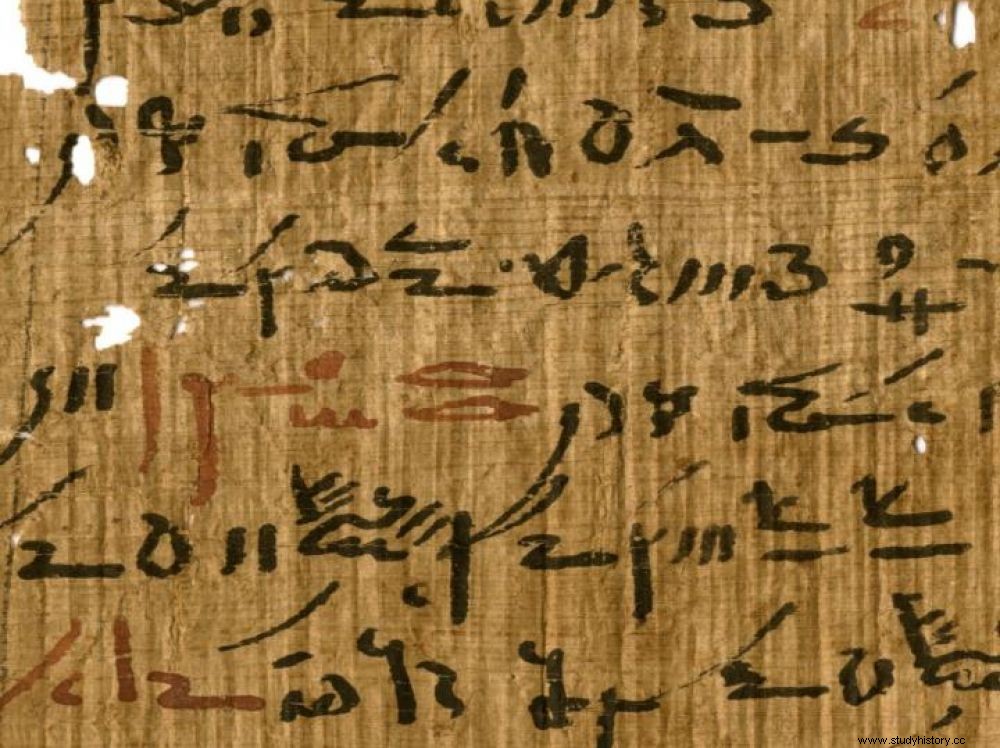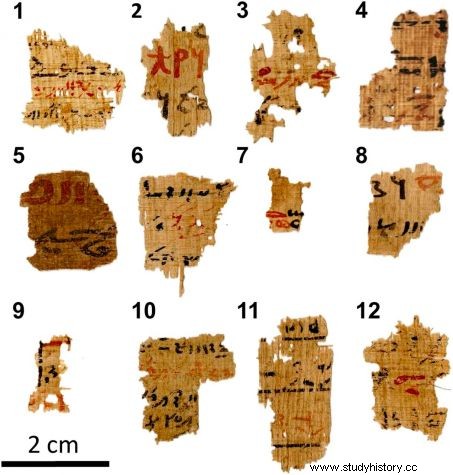The ink used to blacken (and redden) papyri by the ancient Egyptians is far more complex than imagined. Moreover, its composition was already similar to a preparation that will only be found centuries later, among Renaissance painters.

Detail of a medical treatise from the library of the temple of Tebtunis whose titles are marked in red ink.
Invented in ancient Egypt around 5,000 years ago, black ink was constantly used to write all types of texts. Red ink, on the other hand, was preferred for underlining crucial information, such as titles, instructions or keywords. Over the past decade, many studies have been conducted to unravel the mystery of the invention of ink in ancient Egypt, but also to understand its history. Egyptian culture was not the only one to exploit it during Antiquity. Ancient Greece and Rome also made extensive use of it.
Scientists from the ESRF, the European Synchrotron based in Grenoble, and the University of Copenhagen, Denmark, have obtained unpublished information on the red and black inks adorning papyri from Roman Egypt, all produced around 100 to 200 A.D. Their results were published on October 26, 2020 in the journal PNAS .
A drying compound, not a pigment
No less than 12 papyrus fragments were analysed, a relatively exceptional number for such a precious corpus of samples. All came from the library of the temple of Tebtunis, the one and only library of ancient Egypt that managed to cross the centuries to reach us.

The 12 papyrus fragments are from larger manuscripts in the Tebtunis temple library which are inscribed in red and black ink:divinatory/astrological texts (samples 1, 2, 11), medical (samples 3, 6 , 8, 9, 10, 12), and rituals (samples 4, 5, 7). Credits:ESRF/University of Copenhagen
These 12 fragments reveal a complex and unexpected composition of inks:lead, together with phosphate, sulphate, chloride and carboxylate ions, is present in black (3 out of 12 samples) and red (10 out of 12 samples) inks. ). But not in the form of white lead or minium, as researchers might have expected (lead was frequently found in this form in ancient Mediterranean cultures). This detail suggests that this heavy and toxic metal was not used as a pigment but as a siccative, in other words as a component to accelerate the drying of the ink.
This is exactly how European artists began to use lead… in the 15th century, for their oil paints. "In the 15th century, when artists rediscovered oil painting in Europe, the challenge was to dry the oil in a reasonable time", explains Marine Cotte. "They realized that certain lead compounds could be used as efficient dryers." What once again calls into question our knowledge of the oldest writing practices of humanity.
This discovery was made possible thanks to several techniques offered by the synchrotron:micro-X-ray fluorescence, micro-X-ray diffraction or micro-infrared spectroscopy, all of which allow the chemical composition of the fragments to be probed at the same time. millimetric, micrometric scale and even below.
